Food and Culture: Living as a South Asian in London
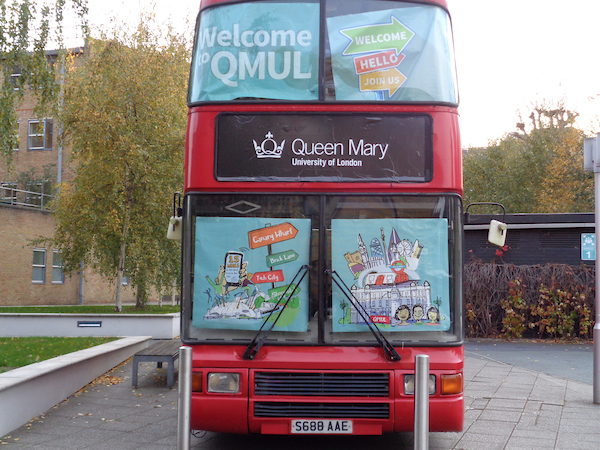

Why London?
Big Ben, the London underground, and torrential downpour. The things London is well-known for are wonderful, but not all there is to the city. Home to more than 8.5 million people, London is one of the main attractions in Europe.
Most study abroad organizations market themselves to juniors and seniors, but as a rising sophomore, IFSA’s Queen Mary, University of London program interested me because it’s open to nearly all students, regardless of year level. While the hustle and bustle of Oxford Street and the area around Buckingham Palace are enchanting, that’s not what drew me to the city. The access to a larger, well-connected, and more ethnically diverse community was. Growing up in a predominantly white neighborhood and then moving thirty minutes north into Philadelphia for college, there were significant changes in my environment, namely, its diversity. However, London was a whole other ballpark and I wasn’t quite sure how to prepare as a student of color.
Cultural Barriers

Living in a community in London with a much bigger South Asian diaspora community helped me warm up to an unknown place. I felt safe and welcomed, and as an outsider, that feeling compared to nothing else.
Though some locals associate the East End with poverty, crime, and general negligence, I found it quite charming; the sense of community found there seemed to be minimized in the posher West End. I largely dismissed those stereotypes, but I was let down by knowing many North American students shared that sentiment. I learned through these interactions to minimize my contact with people who did not embrace diversity of thought, culture, religion, and lifestyle.
Being a woman of color can make navigating social situations difficult but it can lead to enriching experiences. Creating friendships abroad with people who valued those beliefs allowed me to share my experiences through my food, and thereby, culture.
Good Eats
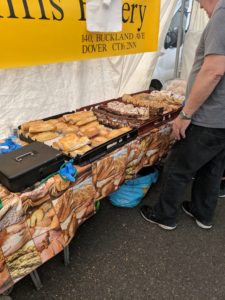
Jalebi, kaju katlis, jangris, laddus, and other Indian sweets lined the streets of Whitechapel on a cool January day. I remember my eyes nearly bugged as I took in the scene. Besides my brief time in India, I hadn’t experienced living near readymade Indian food at any other point in my life.
The “East End” of London, where Queen Mary is located, is home to many people who belong to the South Asian diaspora community. Indian food has woven its way through UK supermarkets, as is evidenced by the fact that I was able to get my hands on garlic naan, raita, and Patak’s pickles at my local Co-Op or Tesco. All these things are often only found in Indian grocery stores here in the U.S., so having such open access to them made cooking so much easier. But I didn’t have everything I had back home. So, I made my own routine!
Adapting
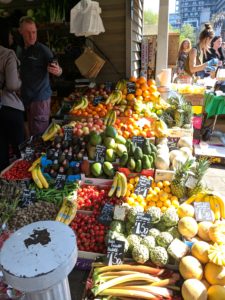
Naturally, with a different country comes varying cuisines, shopping routines, baked goods, and fruits and vegetables. Culture shock can be tough, and it can be worsened by being unable to access the things you’re most comfortable with. Sometimes it’s just a matter of a difference of a name or finding where to look. I found black beans were referred to as turtle beans, where to find bountiful bunches of fresh cilantro, and while baby carrots were largely unavailable, I did get small, snack-size carrots. Walking down Bow Road one day, I stumbled across a tiny, family-run bodega. One half was polished with fresh fruits and vegetables lining both sides, with cans of exotic beans sitting on high shelves, while the other had locally-sourced bread, milk and cheese, and all the snacks I could want.
And so, that twenty-minute walk down the Regent’s Canal from campus became my weekly routine. I think most students have that certain point in their time abroad that changed their perception of the area; my increasing comfort with living in London went hand-in-hand with my access to comfort foods.
Food as a Social Tool
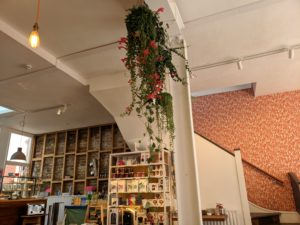
I made a promise to myself at the beginning of the semester that I would push past my comfort zone as much as I could. That goal manifested through my interactions with locals who provided me food and friends with whom I shared meals.
The manager of my local corner store was a kind, 50-year-old Turkish man with a fondness for baked goods. He didn’t speak much English but tried for my sake, letting me know of all the nearby Indian food grocers where I could get home cooked meals for a fair price. Over the course of my semester, I formed a friendly relationship with him; as a student in a foreign country with no familial connections, that meant everything.
In a similar fashion, I made it a point to carve out space in my schedule to spend time with my friends over a meal. In the midst of our busy semesters, those were bonding moments that stay with us to this day. Food exists as a major facet in my social life and its ability to facilitate as an avenue into conversations with strangers and friends alike was made even more special by my personal attachment to cooking and the like.
Take the Plunge
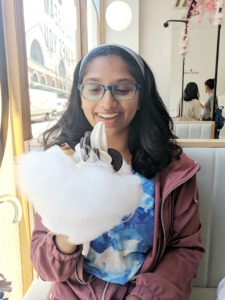
Studying abroad is a fantastic opportunity to meet students from another culture but also learn more about yourself. Having the ability to expose myself to various other components of South Asian culture as a woman from that community in a foreign diasporic community was an incredible experience. Learning about the food scene in London provided me with opportunities to connect with people whom I would not have been able to otherwise, or with as much ease as I did.
Adisri N. | Political Science major | Temple University | IFSA Queen Mary, University of London Partnership | Spring 2019